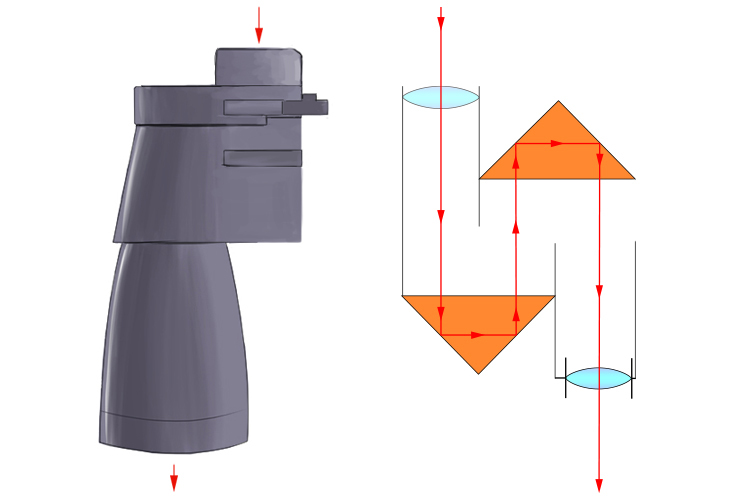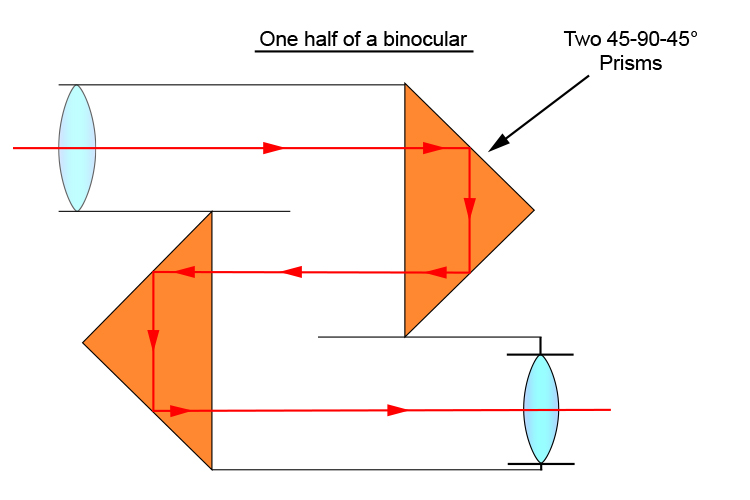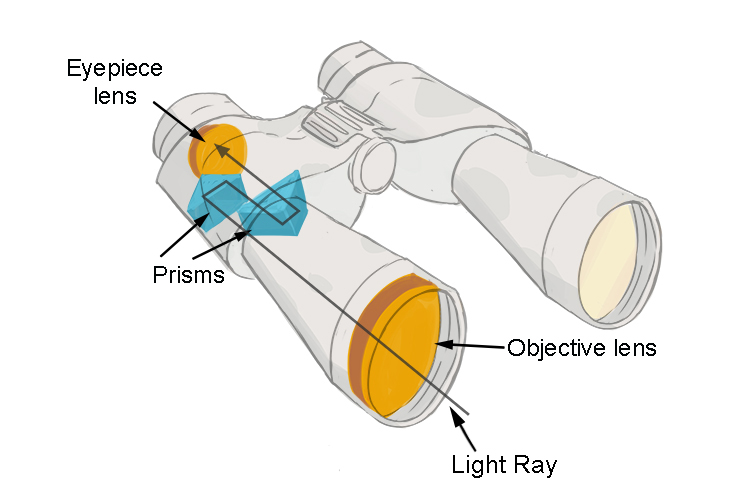Convex lens use – Binoculars
Binoculars are two telescopes mounted side by side, one for each eye. Like a telescope, the problem is that, with two lenses for each side, the image is upside down and rotated 180°. In binoculars, they solve this problem not with a third lens, as with the terrestrial telescope, but with prisms.
Without the third lens, the length of the binoculars can be kept shorter. Prisms erect and reverse the image.

If you followed the path of a ray of light through a telescope and then through binoculars of the same power, the distance the ray would travel would be the same. But in binoculars, the ray extends through the prism. They call this folding the light ray.

The light is folded. If you measured the length of the ray it would be as long as a telescope of the same power.
Binoculars are made so they do not take up as much room, as a telescope.

NOTE: There are usually a lot more inter-connecting lenses in binoculars to correct the effects of light aberration, a distortion of the spectrum of coloured light which means different colours refract at slightly different angles.




